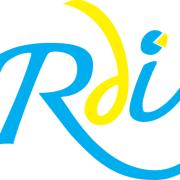Best Practices in Promoting Bilingual Proficiency for Early Childhood Students in Thailand: Case Studies of Satit Bangna School and Plearnpattana School
คำสำคัญ:
bilingual proficiency, early childhood education, school best practiceบทคัดย่อ
This research aimed to explore the best practices studies of Satit Bangna School and Plearnpattana School in promoting bilingual proficiency for early childhood students in Thailand. Data were collected through documentation, archives, and in-depth interviews of four school administrators and twenty-four teachers. The data were analyzed using ATLAS.ti software. The results indicated that the best practices of Satit Bangna School and Plearnpattana School shared a theme: parental expectation. There were two categories: school and home. The first category obtained two codes: in-class practices and extra-class activities. The second category obtained two codes: extra classes and supporting resources.
Downloads
เอกสารอ้างอิง
Bronfenbrenner, U. (1979). The ecology of human development. Cambridge, MA: Harvard University Press. California State Department of Education. (2015). California Preschool Program Guidelines. (Sacramento: California Department of Education, p. 224)
Chomsky, N. (1965). Aspects of the theory of syntax. Cambridge, MA, USA: MIT Press.
Clarke, P.M. (2009). Supporting children learning English as a second language in the early years (birth to six years). VCAA, p. 8. Cummins. (2005). Teaching for cross-language transfer in dual language education:
Possibilities and pitfalls. Paper presented at the TESOL Symposium on dual language education: Teaching and learning two languages in the EFL setting, Istanbul: Universidad BogaziciTurquía, pp. 4-5.
Doman, G. (2005). How to Multiply Your Baby’s Intelligence: The Gentle Revolution. Square One Publishers, p. 79.
Espinosa, L.M. and Magruder, E.S. (2014). Practical and Proven Strategies for Teaching Young Dual Language Learners, in Getting It Right for Young Children from Diverse Backgrounds: Applying Research to Improve Practice with a Focus on Dual Language Learners, ed. Linda M. Espinosa, (2nd ed). (Upper Saddle River, NJ: Pearson, 2015), pp. 76–113.
Gort, M. (2014). Learning in two languages in early childhood: What every early childhood professional needs to know, pp. 9-10. Retrieved April 9, 2020, from https://www.earlychildhoodwebinars.com/wp- content/uploads/2014/03/Gort-PPT4.30.2014-Webinar-Learning-in-Two-Langs-in-Early-Childhood-GORT-to-share.pdf
Muhr, T. (2020). ATLAS.ti 8.0 [Version 8]. Berlin, Germany: ATLAS.ti Scientific Software Development GmbH, p. 1.
Newport, E. (1990). Maturational constraints on language learning. Cognitive Science. 14 (1), pp. 11-28.
Office of the National Economic and Social Development Board. (2016). Thailand 20-year National Strategic Plan. Retrieved April 9, 2020, from http://nscr.nesdb. go.th/wp-content/uploads/2019/10/National-Strategy-Eng-Final-25-OCT-2019.pdf
Smith and Lynch. (2010). Rethinking Teacher Education: Teacher education in the knowledge age. Sydney: AACLM Press, pp. 43-45.
Tavil, Z. (2009). Parental Attitudes towards English Education for Kindergarten Students in Turkey. Kastamonu Education Journal. 17 (1), pp. 331-340. Retrieved April 9, 2020, from https://www.kefdergi.com/pdf/cilt17_no1/331.pdf
Vygotsky, L. (1986). Thought and Language. Cambridge, MA, USA: MIT Press.
ดาวน์โหลด
รูปแบบการอ้างอิง
ฉบับ
ประเภทบทความ
สัญญาอนุญาต
ลิขสิทธิ์ (c) 2021 มหาวิทยาลัยราชภัฏธนบุรี

อนุญาตภายใต้เงื่อนไข Creative Commons Attribution-NonCommercial-NoDerivatives 4.0 International License.
บทความที่ได้รับการตีพิมพ์เป็นลิขสิทธิ์ของมหาวิทยาลัยราชภัฏธนบุรี
ข้อความที่ปรากฏในบทความแต่ละเรื่องในวารสารวิชาการเล่มนี้เป็นความคิดเห็นส่วนตัวของผู้เขียนแต่ละท่านไม่เกี่ยวข้องกับมหาวิทยาลัยราชภัฏธนบุรีและบุคลากรท่านอื่น ๆ ในมหาวิทยาลัยฯ แต่อย่างใด ความรับผิดชอบองค์ประกอบทั้งหมดของบทความแต่ละเรื่องเป็นของผู้เขียนแต่ละท่าน หากมีความผิดพลาดใด ๆ ผู้เขียนแต่ละท่านจะรับผิดชอบบทความของตนเองแต่ผู้เดียว






